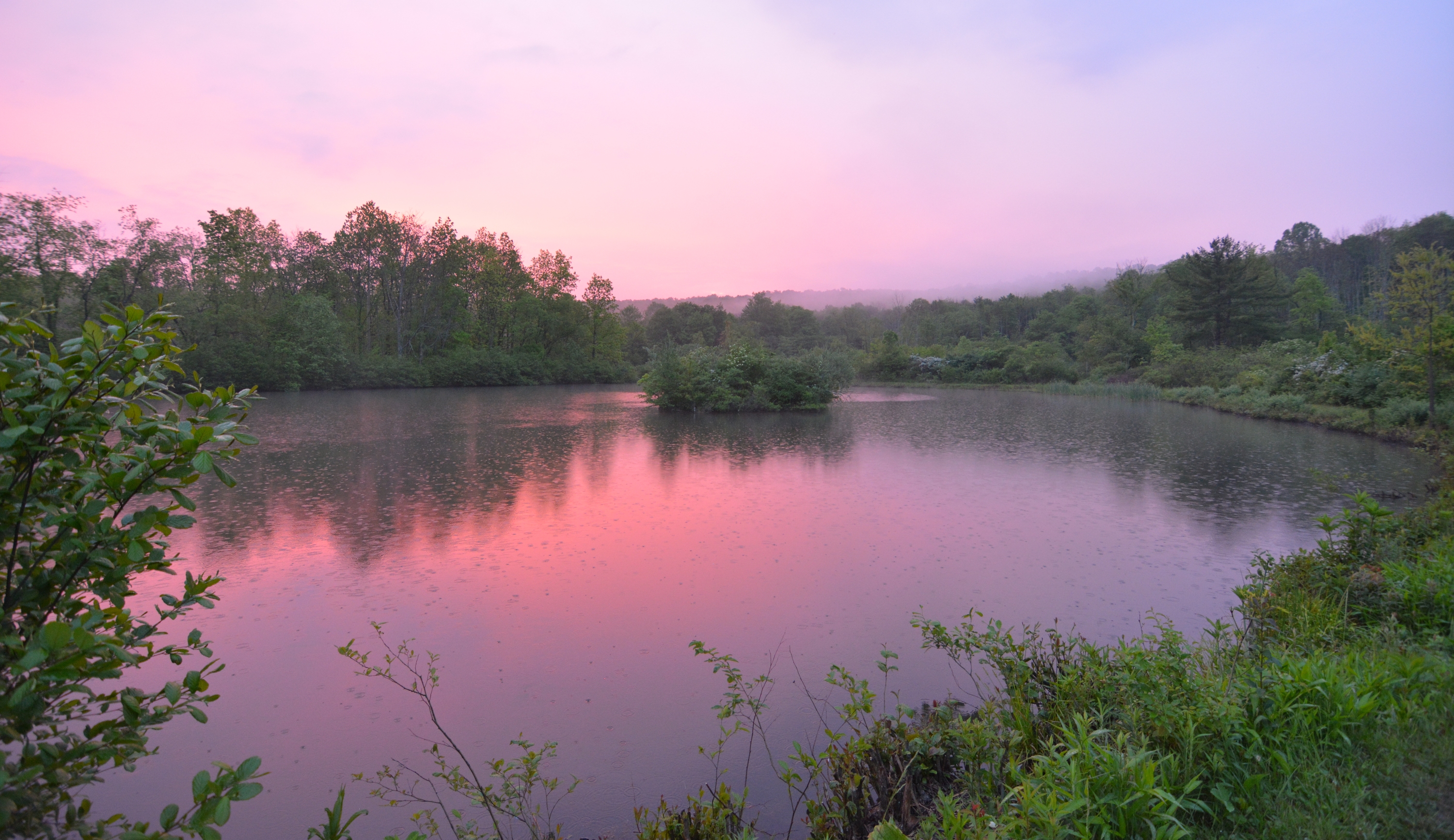June - July 2017
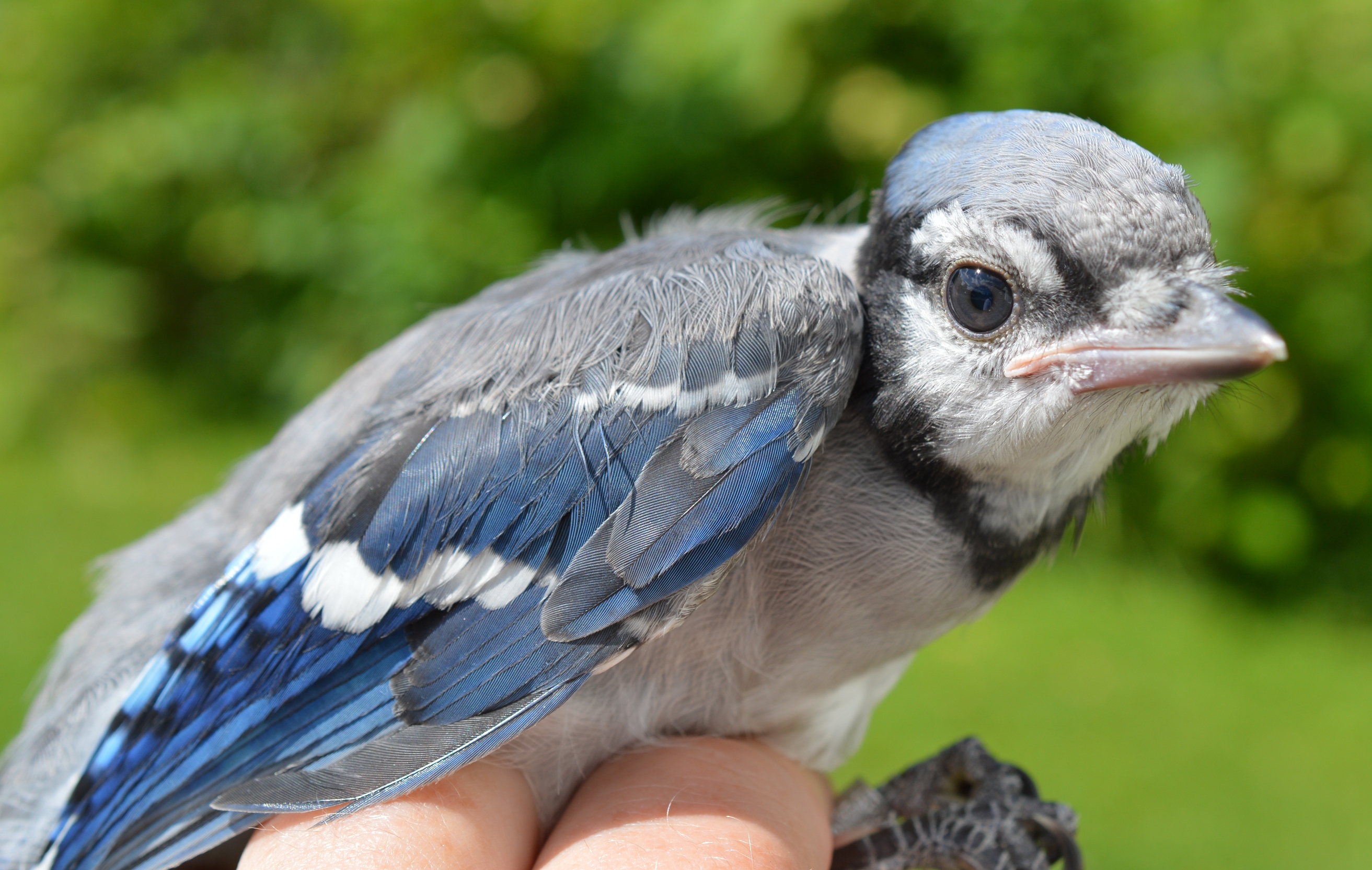
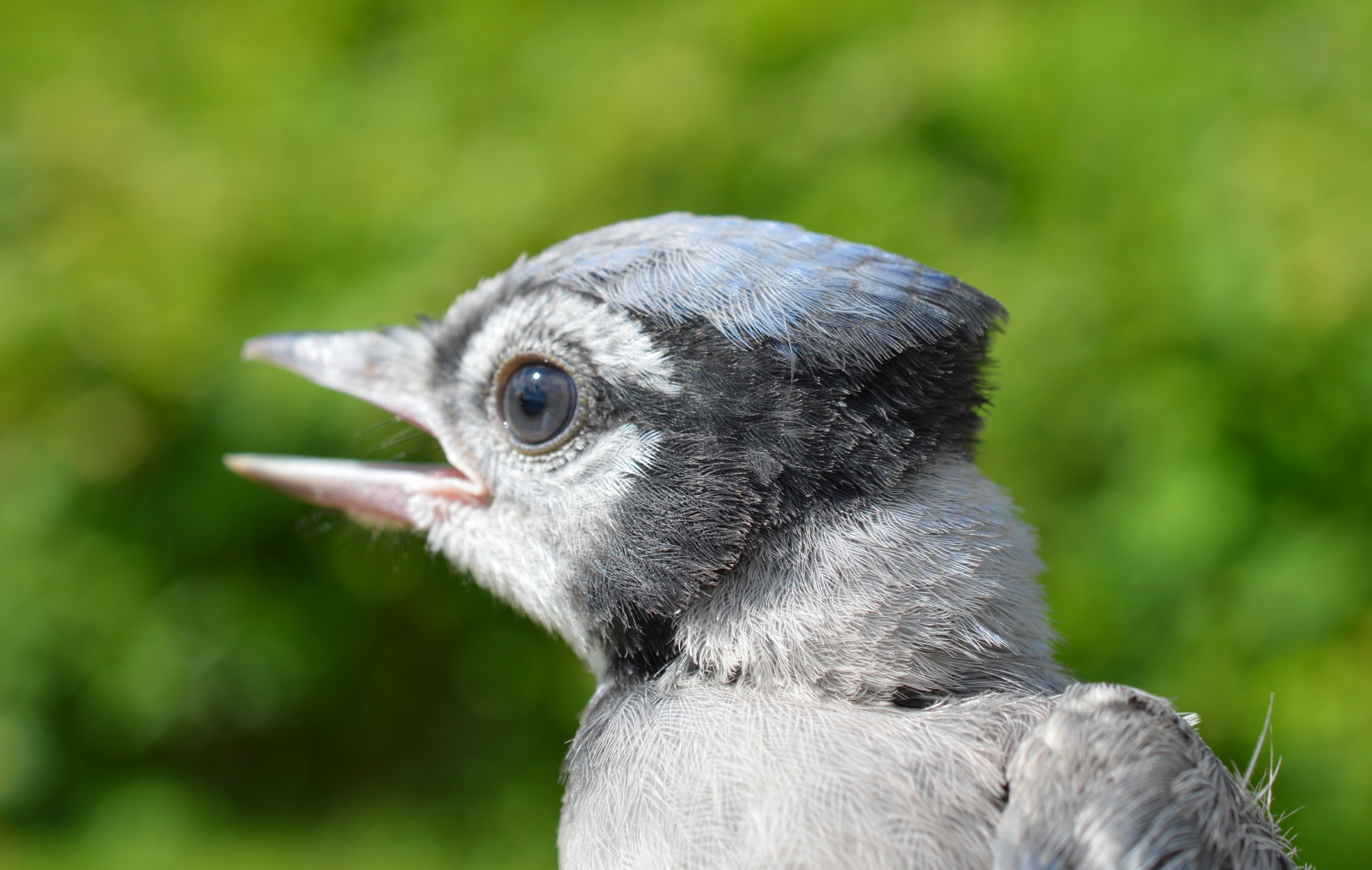
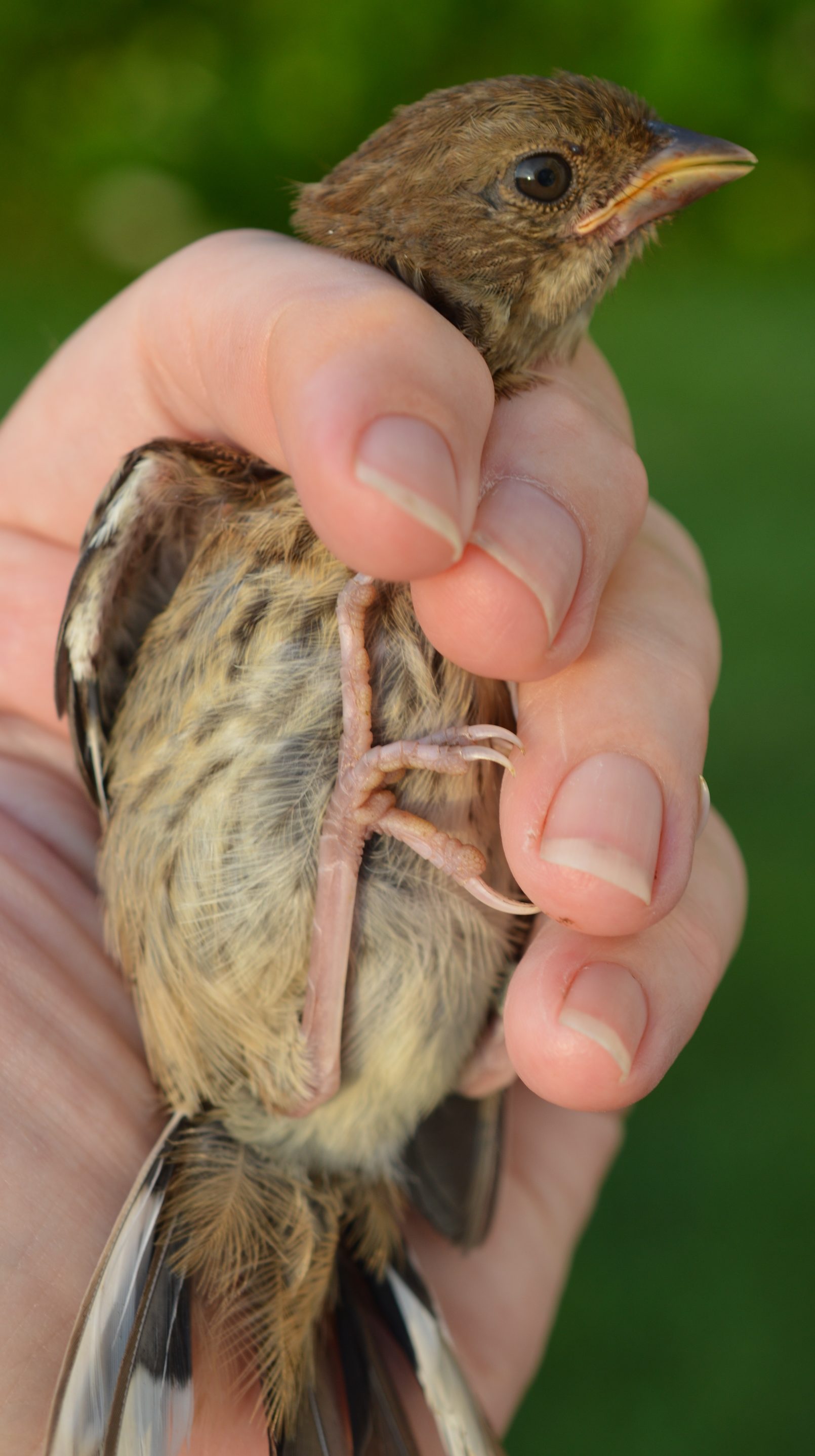
Summer is our shortest banding season of the year, and we run a modified effort with our nets so that we are not daily interrupting our resident breeders. We opened nets on 26 days in this period and captured just over 1,000 birds, with 666 birds banded across 64 species and 364 recaptures.
Since it is the breeding season, it was not surprising that almost half (48%) of our newly-banded birds were juveniles like the Blue Jay (above) and Eastern Towhee pictured here.
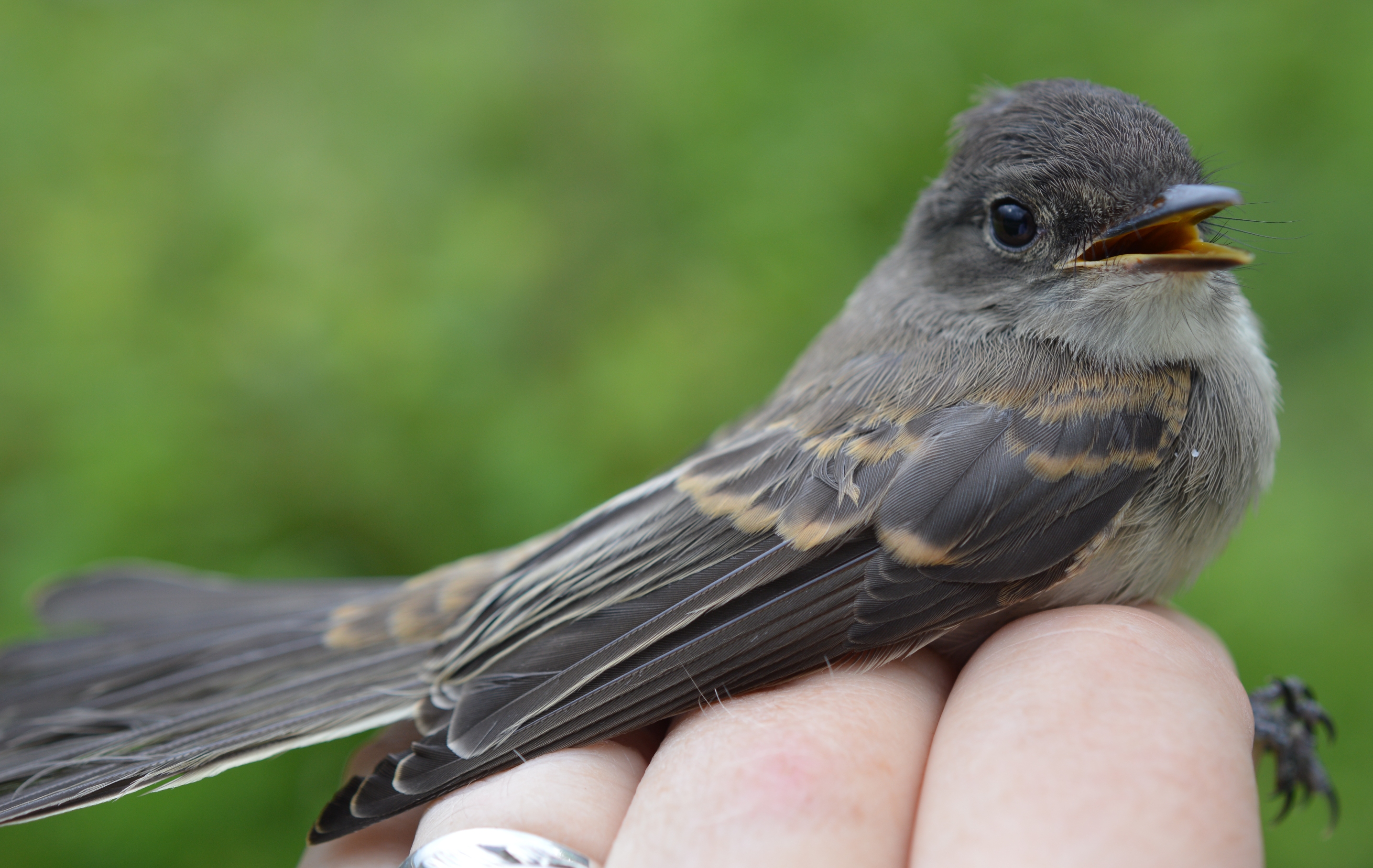
Our local breeding birds and their fledglings held the top spots in the lineup of species-- Gray Catbirds were our most commonly banded bird (111) followed by Cedar Waxwings (72), American Redstarts (57), Red-eyed Vireos (51), Common Yellowthroats (39), Hooded Warblers (36) and Eastern Phoebes (30, featured in the attached photo).
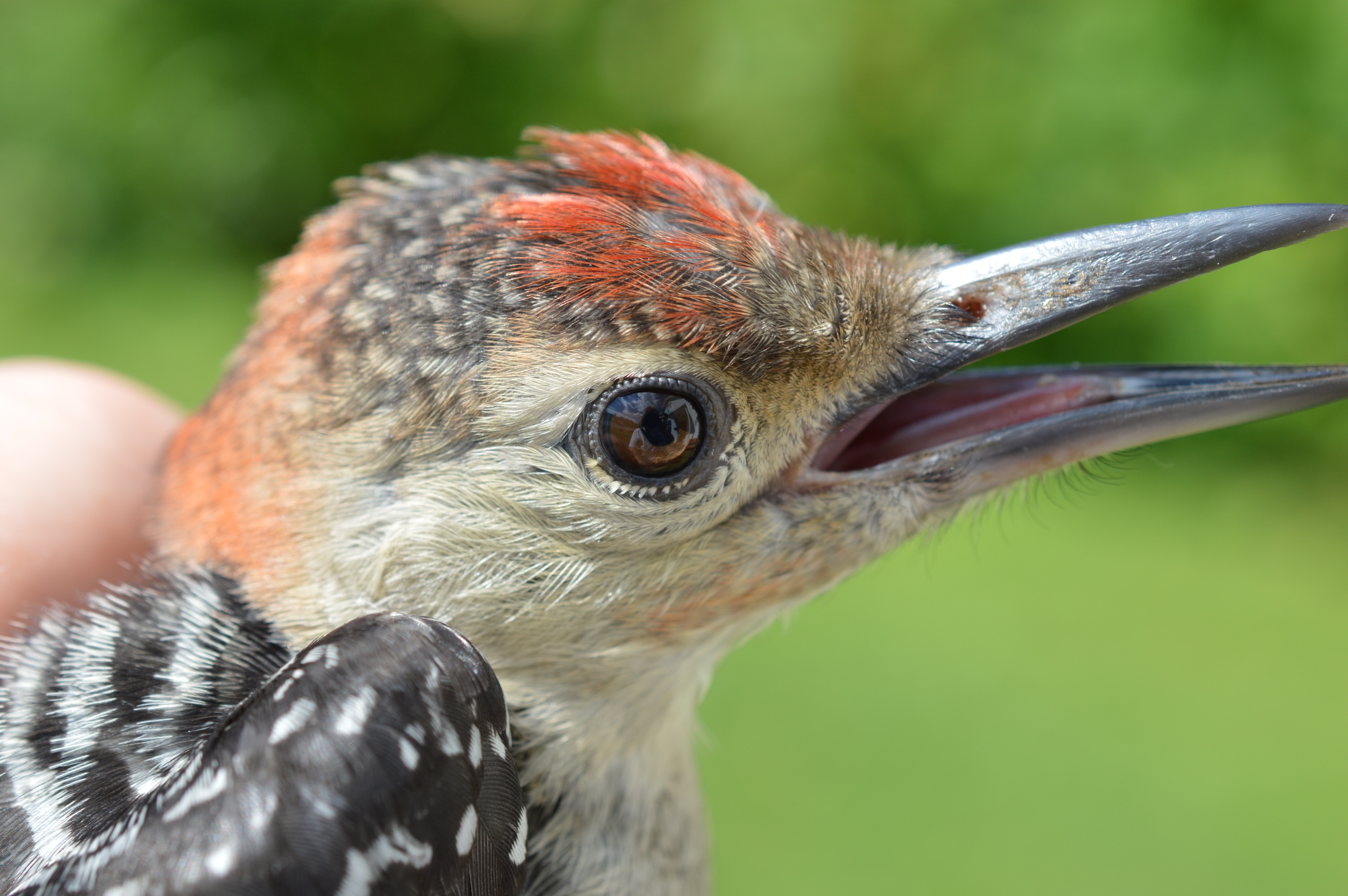
Junvenal eye color can often help us to age birds. Note the brown eye of this young Red-bellied Woodpecker and the very light gray eye of the Blue Jay featured at the beginning of this post. The eyes of the Blue Jay will darken through the Fall and Winter; the eye color of this Woodpecker and the Easten Towhee pictured above will become more red over time.
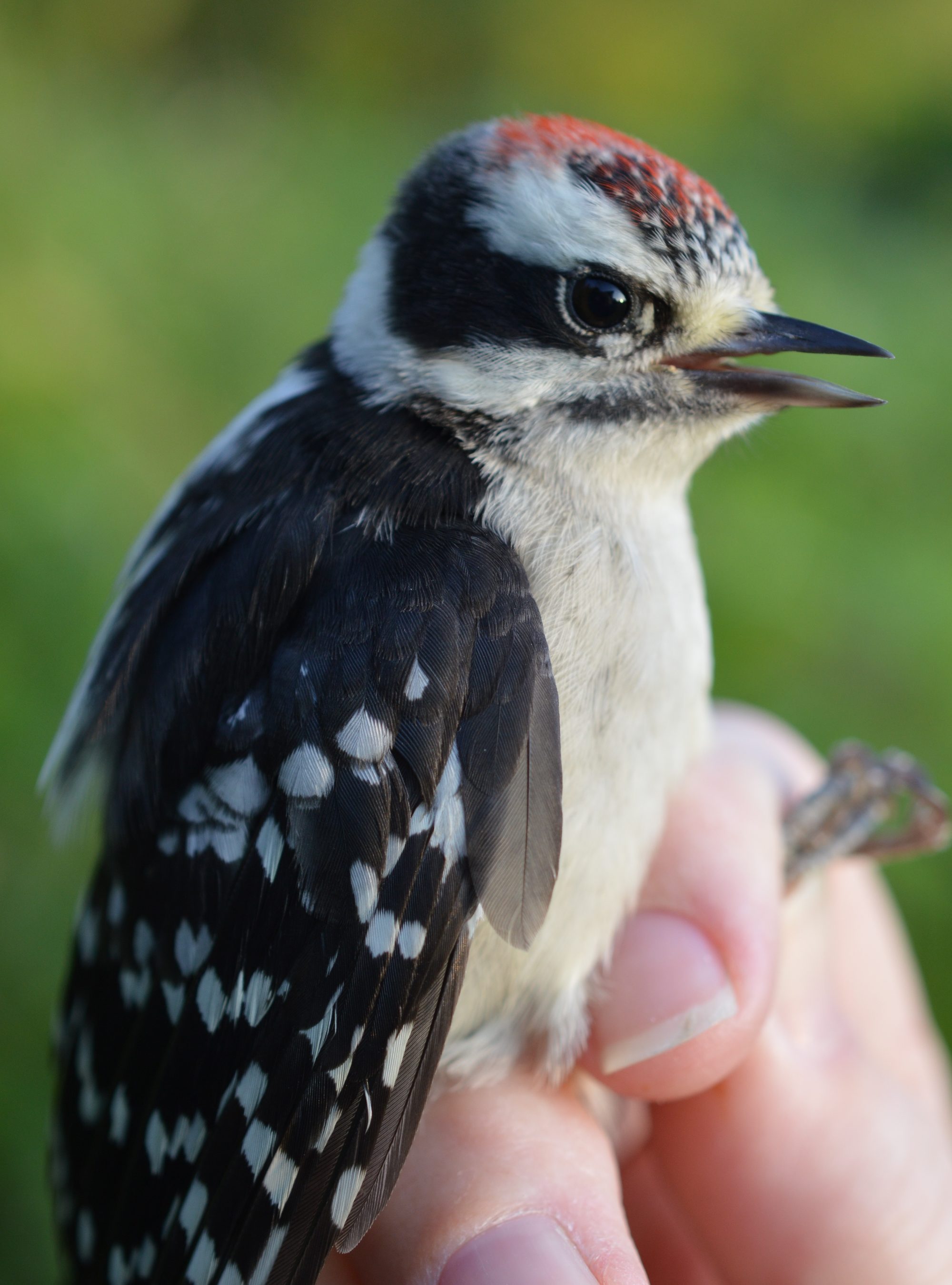
There can also be subtle plumage differences in fledglings. In addition to the loosely-textured juvenal feathers, patterns and colors are often not yet defined or are not as distinct as their adult counterparts.
Notice the placement of the red on this young Downy Woodpecker's head. Normally males of this species have a red hindcrown and females lack the red altogether. But a juvenile of both sexes of this species can have some red in the central crown. For young females, the red is usually just a few feathers and does not extend past the eyes, so we were able to sex this individual as male.
We banded an even dozen woodpeckers this summer-- two hatch-year Red-bellied Woodpeckers and ten Downy Woodpeckers. We had our first Downy Woodpecker on June 2 and the rest all came in July; all but one were young birds.
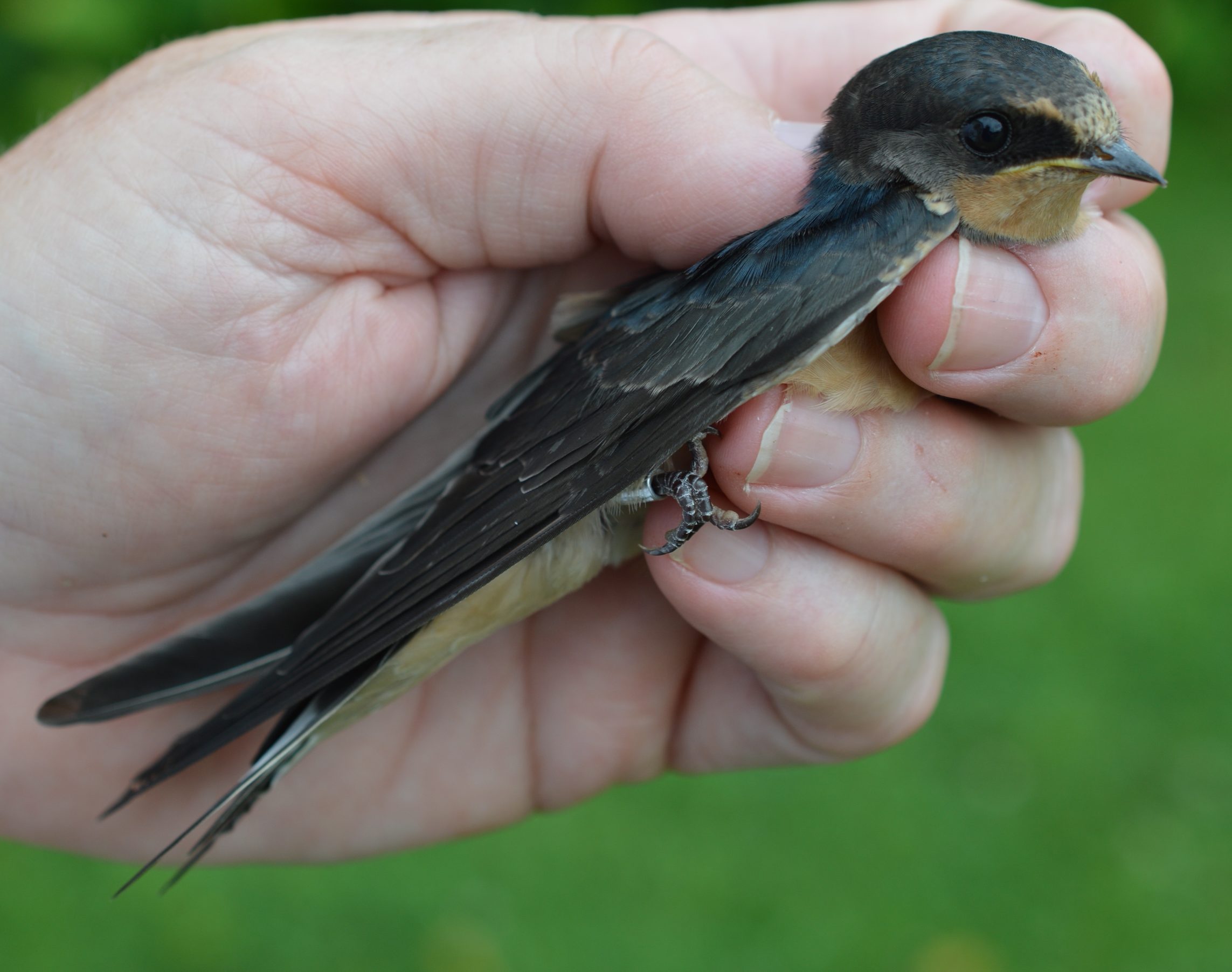
We banded four Barn Swallows this summer-- an adult male at the end of June and three hatch-year individuals at the beginning of July. The young bird pictured here was banded on July 6th.
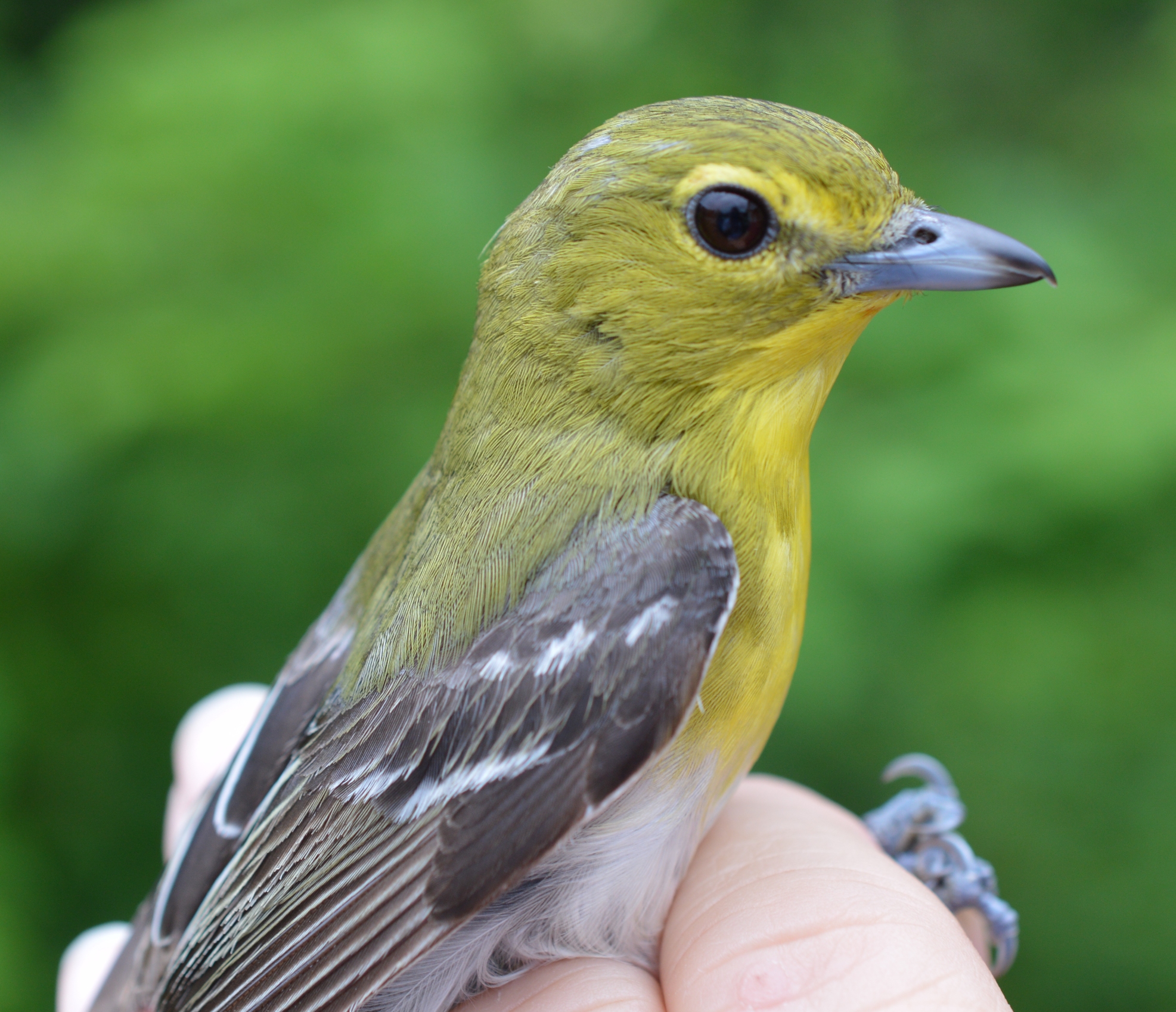
Yellow-throated Vireos can be a hit-or-miss species for us, so we were happy to band this second-year (hatched in 2016) female on July 13th. Although she had a brood patch, she was the only Yellow-throated Vireo we would see this season.
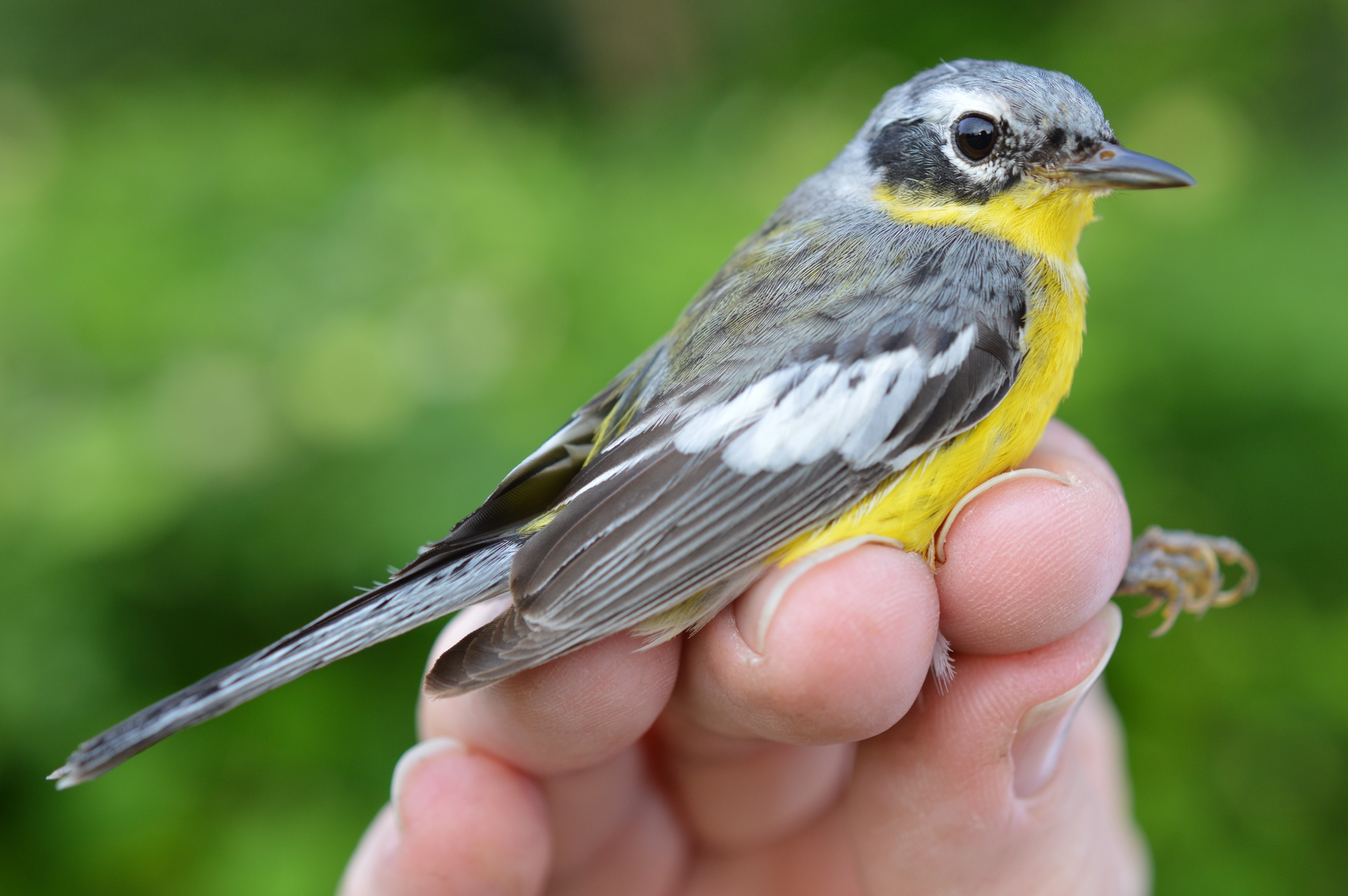
This adult female Magnolia Warbler banded on July 27th was also a surprise and she too had a brood patch. Although this species makes our top 10 list during migration, they breed at higher elevations and we rarely band them over the summer. This individual was an after-second-year bird that may have dispersed after a failed nesting attempt. Our only other Magnolia Warbler this summer was banded on June 1st and was likely a late migrant.
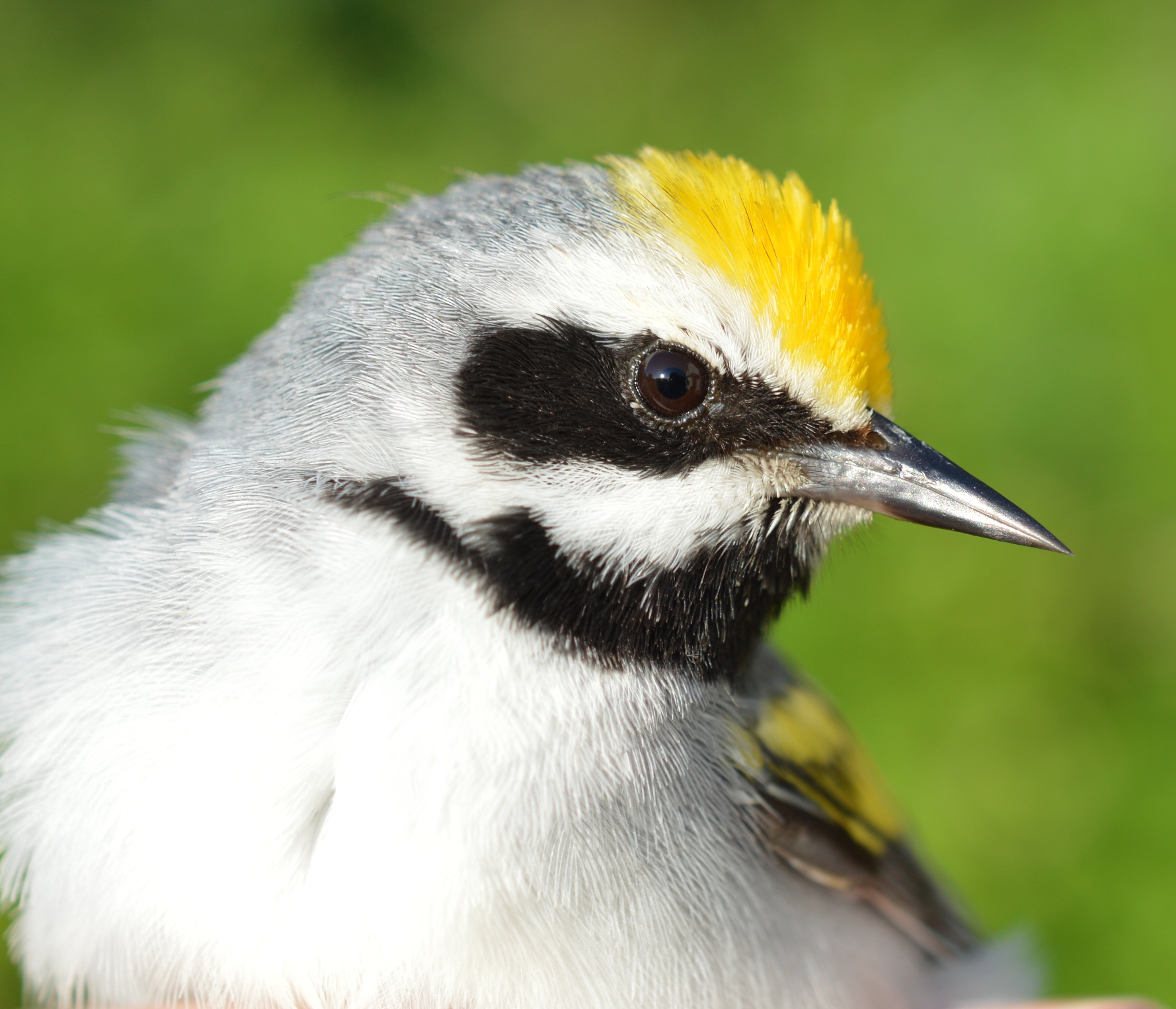
Another good catch for us was this Golden-winged Warbler originally banded here on July 22, 2014 as a hatch-year bird. This summer, close to three years later, was the first time we saw him since that original encounter.
We are always happy to see these warblers since we do not band many of them-- this individual was one of just 17 Golden-wings banded in the last seven years. According to Cornell's "All About Birds" website, the Golden-winged Warblers "have suffered one of the steepest population declines of any songbird species in the past 45 years." Therefore, it was nice to see that this one is indeed doing well and back at Powdermill!
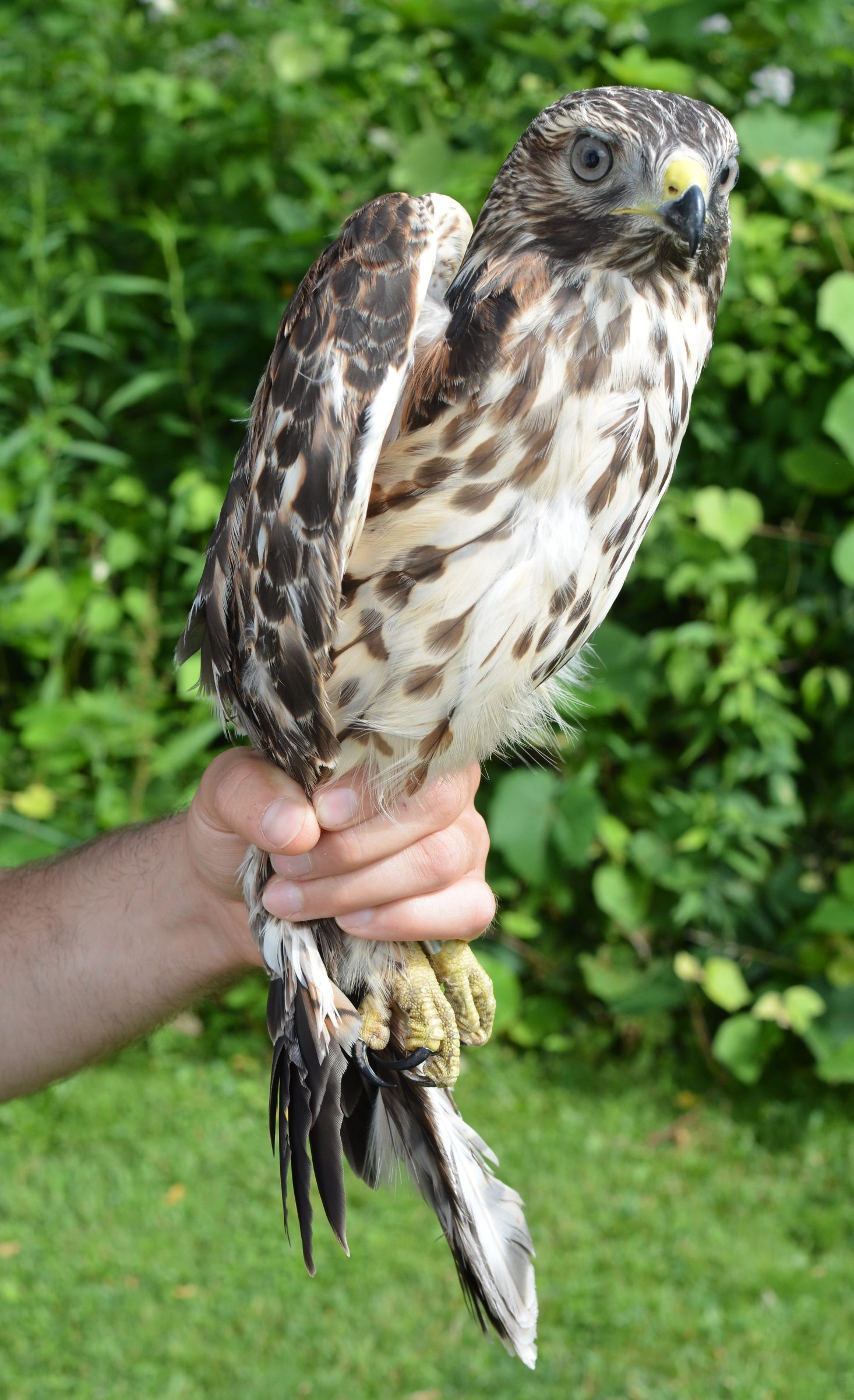
And now to wrap up this season's highlights-- a surprise in the form of a HAWK...
On July 1st we banded our first Red-shouldered Hawk in more than eight years! Although they nest right up the road from the lab and are heard calling most days as they soar above us, this newly-fledged individual is just our FOURTH ever in our 56-year history of banding at the Reserve. Two others were hatch-year birds (8/10/1963 and 7/13/1994) and there was an adult female banded here on 4/14/2009.
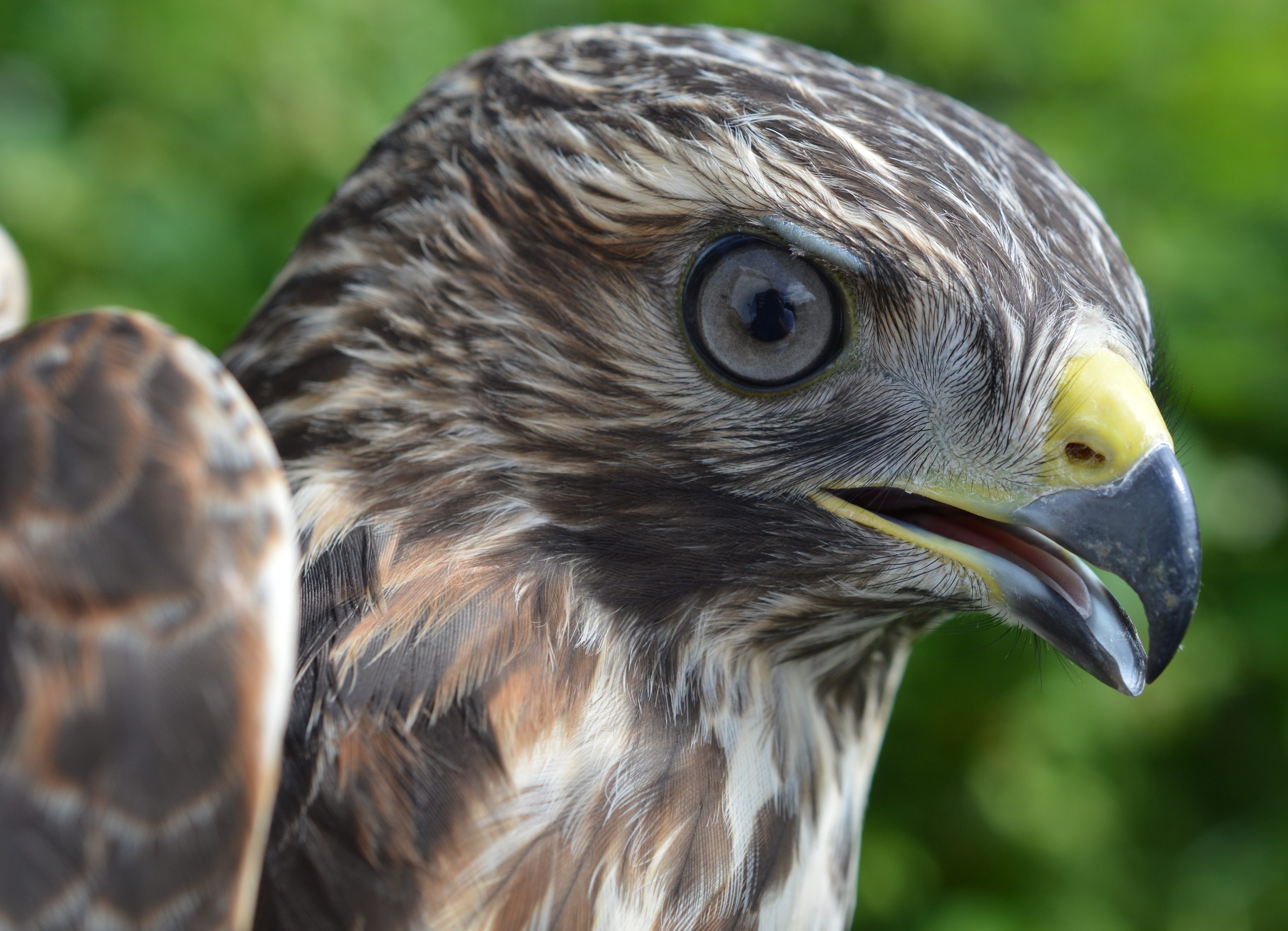
Note the pale gray iris of this juvenile hawk; it will change to a dark brown as it ages.
Also, once again, the plumage points us to this bird's age immediately-- adult Red-shouldered Hawks have orange horizontal bars on the breast rather than the brown vertical streaks on this individual.
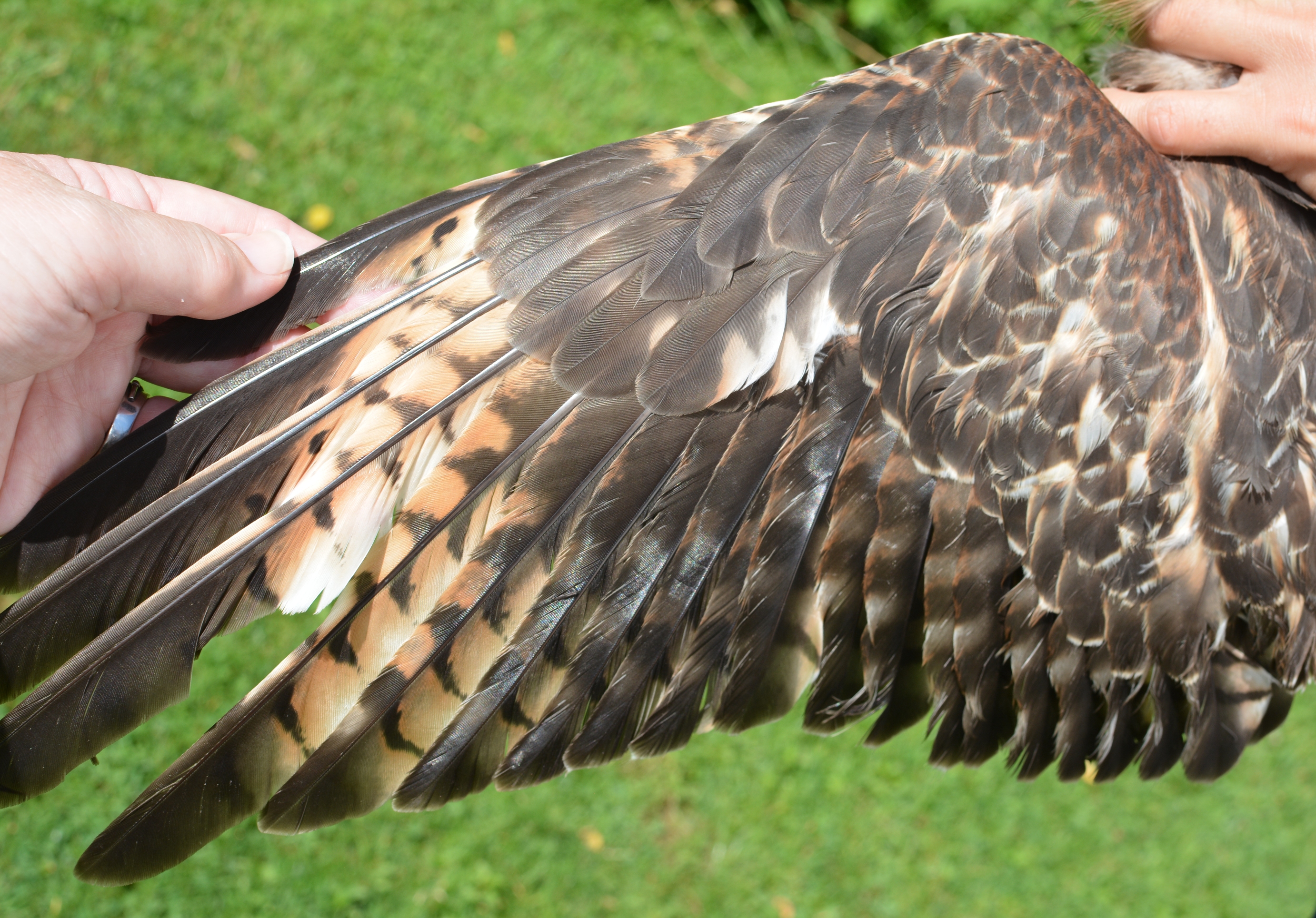
A spread wing shot of the Red-shouldered Hawk.
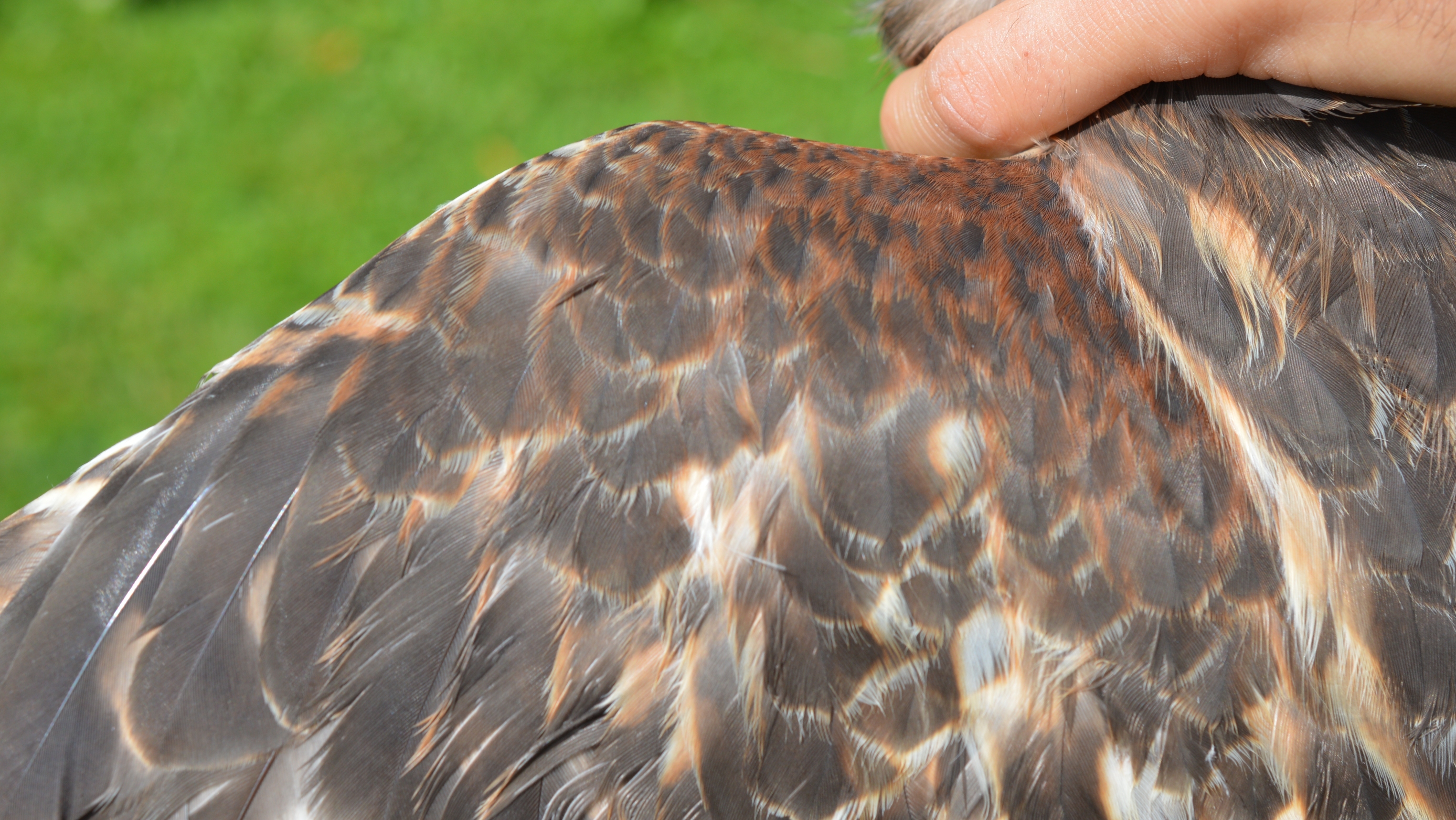
A close-up of the Red-shouldered Hawk's namesake red patch on the "shoulder."
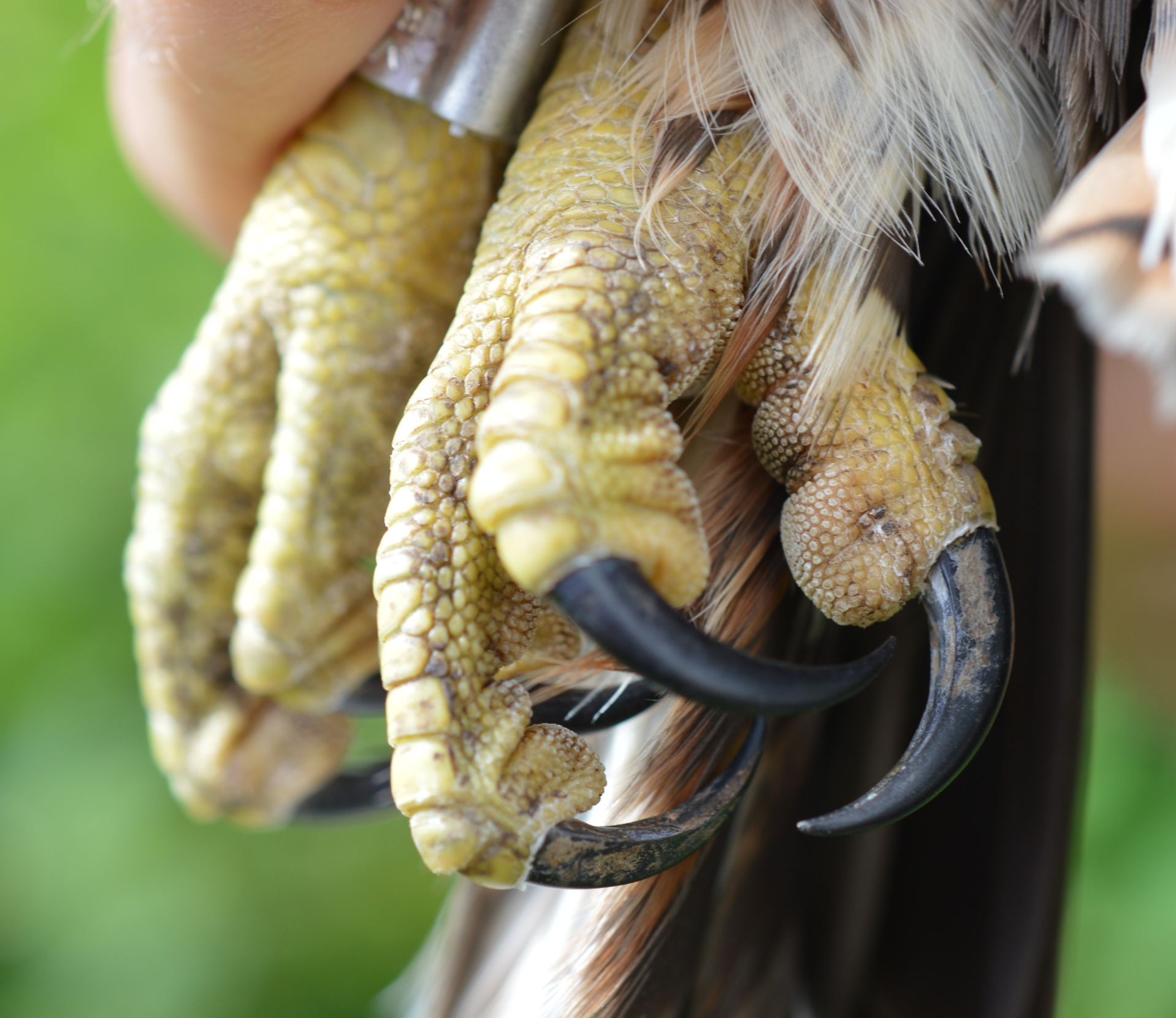
As with all raptors, the talons were formidable and potentially the most dangerous!
That's it for Summer 2017. We'll be out checking the nets, banding birds and taking more photos for our highlights page. Come back soon to see what other cool species we have encountered!
